The moment of truth has arrived. We just harvested the Glass Gem Popping Corn we grew this summer. Between the rats and corn worms, we lost at least half the harvest, but what was left was substantial enough to be proud of.
Glass Gem is an open pollinated seed “bred from a number of Native varieties by Carl ‘White Eagle’ Barnes, the famous Cherokee corn collector to whom we owe our gratitude for his life’s work of collecting, preserving and sharing so many Native corn varieties,” according to Baker Creek Heirloom Seed company. We got our seeds from Native Seeds/SEARCH a couple years ago. One look and you’ll want to grow this beauty yourself.

Popping corn is easy to grow, as indicated in other blog posts. It’s the easiest of all crops. Just let it dry and harvest it. No need to check for ripeness or harvest in a 2-week window. We picked the ears when the husks were completely brown and starting to tip away from the stalk.
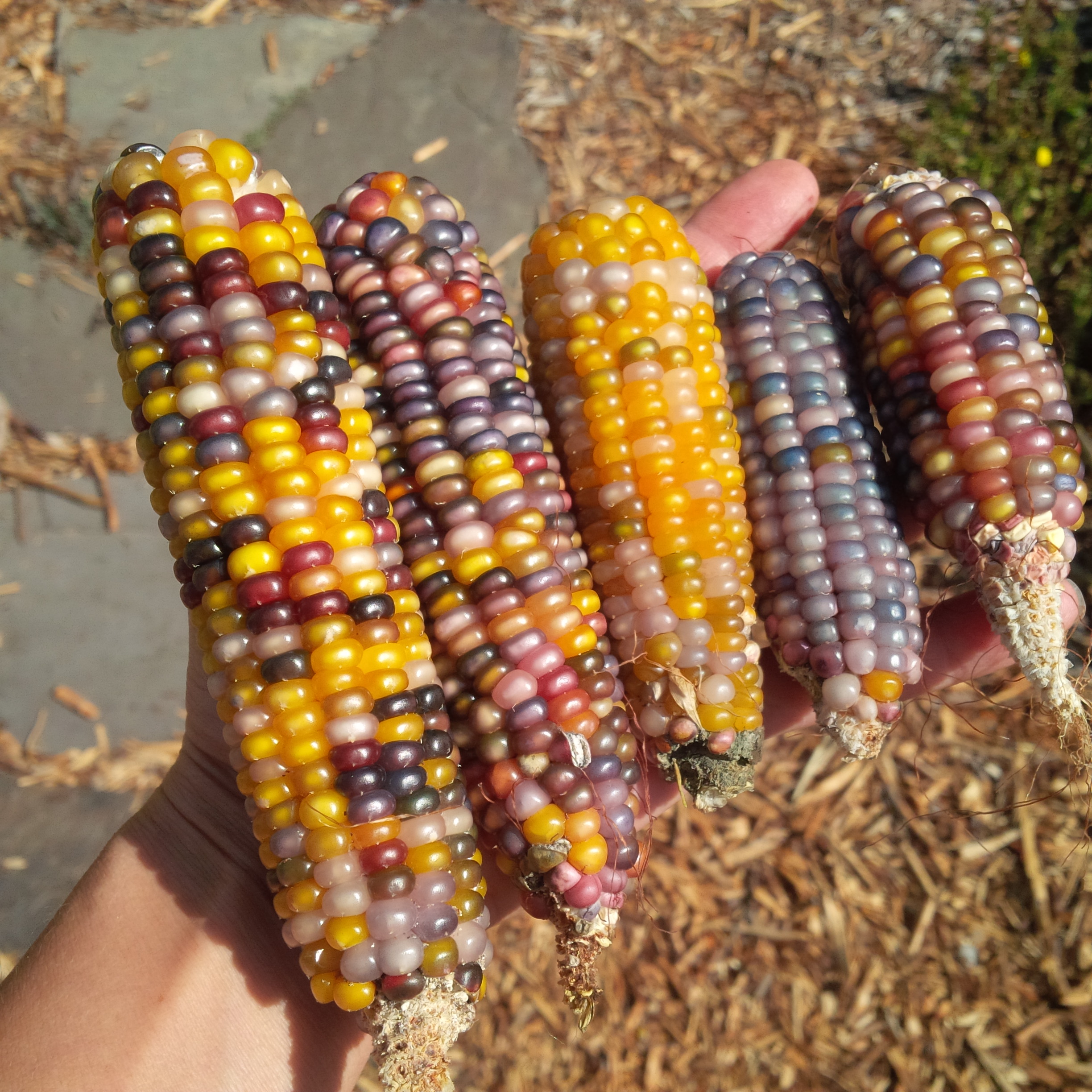
Glass Gem, as you can see, manifests in a variety of colors. Bright yellows, deep blues, reds and even greens find their way into each ear. Once the kernels were dry enough to pop easily off the ear, we shelled the corn with our handy corn sheller.
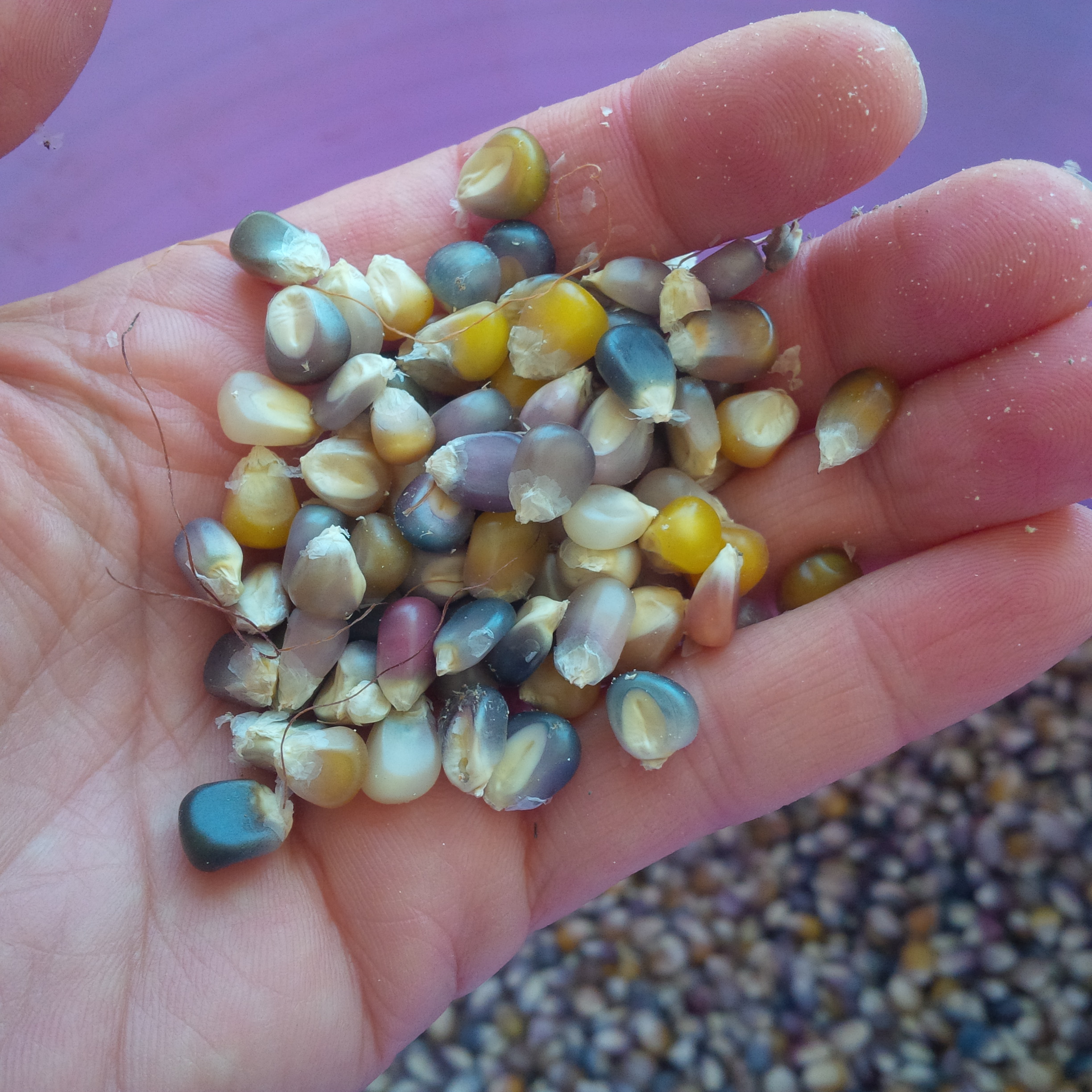
Hint: wear gloves when shelling corn. That sheller can really tear up your knuckles.
Next, we winnowed the corn in front of a box fan. It doesn’t take long to clean off the chaff on corn. Just pour the seed from one bucket to another slowly. The corn is heavy and falls to the bottom bucket while the chaff floats away in the breeze.
The result is this gorgeous popping corn you almost don’t want to pop.
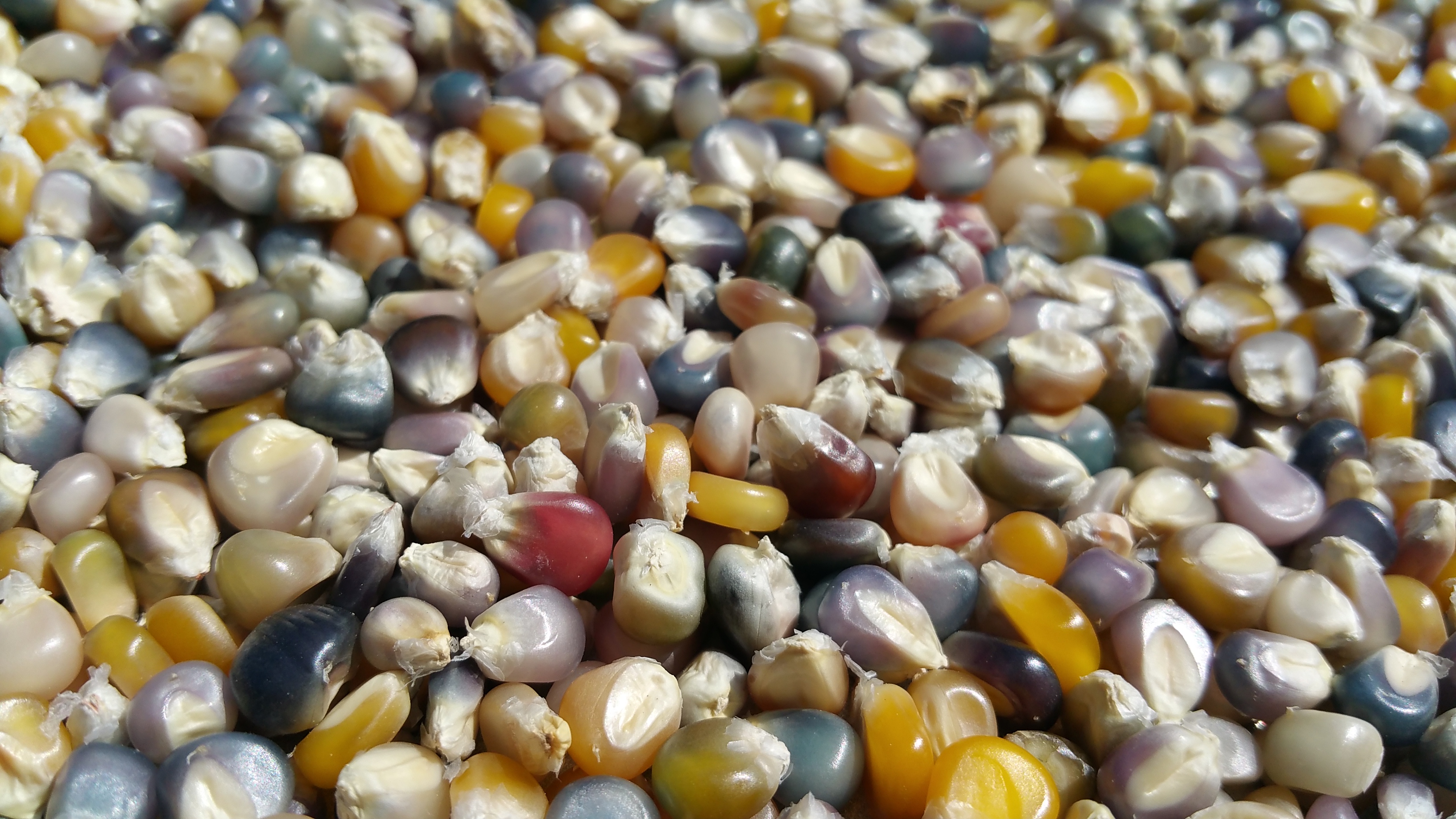
Almost…

The kernels pop white (I know…we secretly hoped for Fruit Loop colored popcorn). Delicious, no butter needed. The moisture content needs to be around 13% for all the kernels to pop. Our first test batch of 10 kernels only popped 7. We added a tablespoon of water to the storage jar and covered for a few days, shaking several times a day. Today’s batch (above) only gave us 1 widow, but several undersized pops as well. So we’re adding another teaspoon of water and will test again in a few days. If all goes well, we’ll put the kernels in the freezer for a few days to kill off any critters and mold spores.
We ended up with 2.7 pounds of popping corn from a 15 square foot space. If we hadn’t suffered losses from rats and worms, the result would have been double. Not bad for a home gardenerd. This will last us a year.

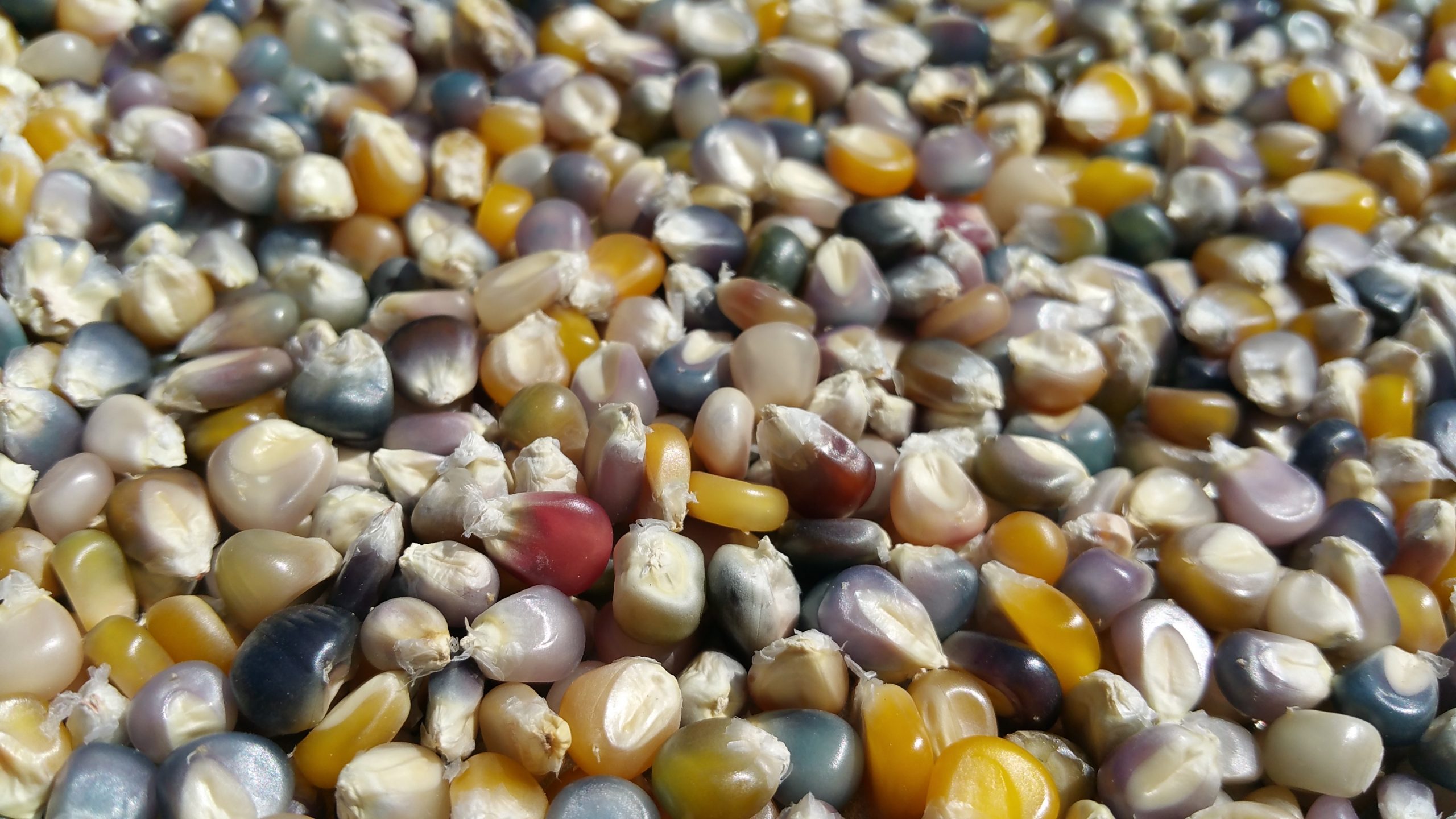

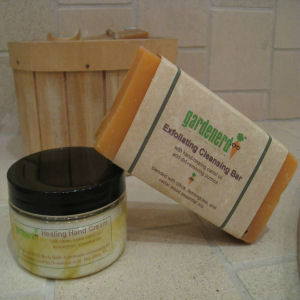
I’ve grown gem corn the last couple years with a great harvest! I pick earlier than you did mainly to save it from kritrers..after the tassels fall off I peal a little back to see if it’s ripe. I dehydrate it on the cob but cleaned at 120. It takes about 10 hours. Then I put it in a paper bag in my closet for a couple months! or until I feel like it..I don’t need any special tool I just use a wringing motion and it falls right off..then I store it in glass jars until I use it. I found it needs a very high heat to pop, my air blower didn’t work. However we like to make tortillas..polenta and flour best. Bon Appetit!
Nice! It sounds like that patience of your sure paid off. It’s such a beautiful corn, and I love that you used it for flour and meal. Thanks for sharing!
Do you pop it in oil? We have a whirly pop pan that we use when we pop popcorn from the grocery store. We put a little bit of oil in the bottom and pop it that way. Was wondering if you know if that works with the glass gem corn. Maybe that would bypass having to find the right moisture content?
We always pop our popcorn in oil. The moisture content is responsible for the corn popping or just weakly cracking open. Not enough moisture = weak opening. Plenty of moisture = build up of steam inside the kernel and a good pop. What it pops in has no relevance to the popping itself.
I grew this to this year I got seeds in a trade but only planted a few of them about 8 stalks now I tried piping with no luck at all any thing help these pop
HI Matthew, moisture content is tricky with popcorn. It has to be somewhere around 13% moisture in order to pop (and to reduce widows – unpopped kernels). I found that I had to dry down the popping corn on trays for a couple weeks after harvesting to get it to the point where it would pop. On other occasions I have added water to the corn in a jar, shaken it every day until the water is absorbed, and then it popped after that. But you have to be careful because moisture breeds mold. I have made the mistake of putting my “moisturized” popping corn in a jar in the pantry only to discover it a few weeks later covered in mold. Sources suggest storing it in the fridge once you obtain the right moisture content. Give that a try and pop a few kernels after each attempt.
Can I ask, how long do you keep the corn on the cob before removing? And did you dry hanging or flat o on the husk (which is too late as I picked all mine this year today)
Thanks ooodles
Hi Trisha,
We leave the corn on the cob until the kernels pop off easily and when the kernels are solid enough to stand up to the metal corn sheller we use. If there is still moisture in the kernel, the corn sheller will shred the kernel instead of removing it. Once the moisture is low enough, the kernels should release much more easily from the cob. The exact amount of time will depend on your climate, humidity, and how dry the corn is when harvested.
Thank you so much for your blog! This the first year I’ve ever planted ANY type of corn and I was doubtful that I’d get any, due to how late I started my seeds and eventually got them into the garden! Here in western Massachusetts, it’s been getting colder and colder, especially overnight and I’m wondering if anyone has any advice about:
When to harvest the glass gem ears
If they dry out enough on the stalk BEFORE harvesting or if I need to allow them to dry out even more once I’ve harvested them? Basically, what do I need to do in order to pop & enjoy my glass gem popcorn?
Welcome, Stephanie! There are several blog posts that can help you on your way. Here is one specifically about harvesting Glass Gem: Harvesting And another about general popcorn harvesting: Here’s another on harvesting Black Dakota popcorn (just because it’s so pretty):
You may need to bring your corn indoors before it’s completely dry on the stalk, but you can continue to dry it out on screens or hanging in a dry location out of direct sunlight. Good luck with this and have fun.
I actually have 30 or so stalks in my garden growing with 2-4 on each stalk. They ahvn’t browned up yet, but i watch every day. I guess i gotta wait for htem to turn brown to pick even with it getting cold out. Can’t wait to see how they look and lots of people round here want some. Gonna have to get biodegradable pods and keep a hundred or 2 seeds to plant a ton more next year. They really like the nutrient powder i make out of rotten wood and plant matter. Grew so quick it nearly spooked people who hadn’t been to the house for a few days after seeing them.
Awesome, Kyle. Keep us posted about how your second year grow-out goes. They sure are pretty, aren’t they?
Do you know if I want to use them for decorating, is there something I can cost them with to bring more shine?
That’s a good question, Sue. I know the color fades over time as well, but you might be able to coat them with some kind of varnish or something found at craft stores to seal and protect the corn for future use.
Coincidentally, we I guess bought this too from Baker Creek and grew this year and had good results also. Sadly, each time we harvested some, our daughter grabbed it, and ate it raw off the cob before we ever popped it or cooked it, so apparently this stuff is good raw too! Maybe it’s the random colors that enticed her. We are pretty happy to have her take down raw corn in any case, it’s got to be nutritious right?
LOL! That’s hilarious, Tom. Yes, better raw corn than snails, right? I’m so glad to see this corn variety becoming more mainstream.